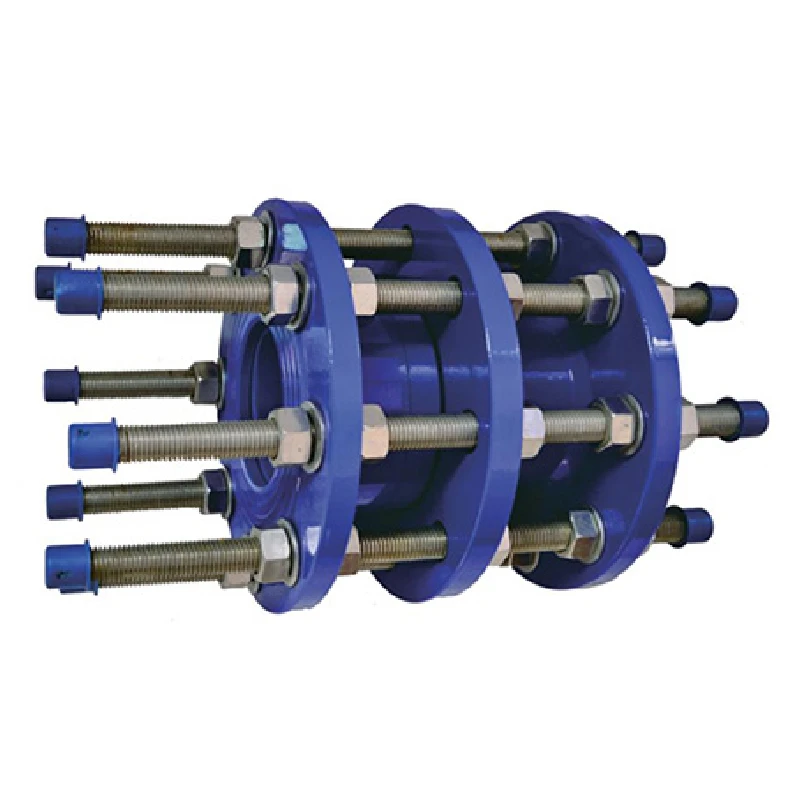វិច្ឆិកា . 16, 2024 21:13 Back to list
reflex rubber expansion joint
Understanding Reflex Rubber Expansion Joints A Comprehensive Guide
Reflex rubber expansion joints are integral components in a variety of industrial systems, particularly in piping and ductwork applications. Their functionality is crucial for accommodating movements caused by thermal fluctuations, vibrations, and other dynamic forces that affect piping infrastructure. This article will delve into the nature of reflex rubber expansion joints, their construction, applications, benefits, and maintenance considerations.
What are Reflex Rubber Expansion Joints?
Reflex rubber expansion joints are flexible connectors made primarily from rubber compounds, designed to absorb and mitigate vibration and misalignment in piping systems. Unlike traditional expansion joints, which may consist of metal or composite materials, reflex joints are characterized by a flexible, rubberized construction that allows for significant movement and compensation for thermal expansion. This capability is vital in preventing stress on pipes and extending the life of the entire system.
Construction of Reflex Rubber Expansion Joints
These expansion joints typically feature several key components
1. Elastic Body The core of the reflex joint is made from high-quality rubber elastomers, often reinforced with fabric or metal layers for added strength. This construction allows the joint to stretch and compress under pressure and temperature variations.
2. Flanges Reflex expansion joints are usually equipped with flanges on either end, which enable easy installation within existing piping systems. Flanges can be manufactured to standard dimensions, making it easier to integrate the joint into a variety of setups.
3. Internal Layers To enhance durability, many reflex rubber expansion joints include internal reinforcements made from various materials, such as stainless steel or fabric. These layers provide extra support and resistance to wear and tear.
4. End Types Reflex joints come in different end configurations, including plain ends, raised face flanges, and grooved ends, allowing for compatibility with diverse piping systems.
Applications of Reflex Rubber Expansion Joints
Reflex rubber expansion joints are versatile and can be utilized in numerous applications across various industries
- HVAC Systems Within heating, ventilation, and air conditioning systems, these joints help absorb vibrations and thermal expansions, ensuring smooth operation and preventing system fatigue.
- Water and Wastewater Management In water distribution and wastewater facilities, reflex rubber expansion joints accommodate shifting pressures and temperatures, protecting pipe integrity.
- Industrial Manufacturing Manufacturing plants with conveyor systems, mixers, or cooling systems benefit from the flexibility offered by reflex rubber expansion joints, allowing for movement without damaging the pipes
.reflex rubber expansion joint

- Power Generation In power plants, these joints play a critical role in handling the expansion and contraction of steam and water pipes, contributing to operational efficiency and safety.
Benefits of Using Reflex Rubber Expansion Joints
The adoption of reflex rubber expansion joints brings a multitude of advantages
- Flexibility Their capacity to handle angular and lateral movement without compromising system integrity is unparalleled, making them ideal for applications with significant movement.
- Vibration Dampening Reflex joints are excellent at reducing vibrations, which can protect downstream equipment and reduce noise levels.
- Corrosion Resistance Made from durable rubber compounds, they offer resistance to various chemicals and environments, ensuring longevity and reliability.
- Ease of Installation The availability of standardized flanges and sizes allows for quick integration into existing systems, reducing downtime during installation.
Maintenance Considerations
To maximize the lifespan of reflex rubber expansion joints, regular inspection and maintenance are essential. Key considerations include
- Visual Inspections Regularly check for signs of wear, cracking, or deformation in the rubber components.
- Temperature Monitoring Ensure that the operating temperatures remain within the specified limits for the joint materials.
- Pressure Checks Monitor the system’s pressure levels to avoid exceeding the joint's rated capacity.
- Replacement Planning Develop a schedule for periodic replacement, especially in high-wear environments.
In conclusion, reflex rubber expansion joints are vital components in modern industrial systems, providing flexibility, vibration dampening, and protection against thermal expansion and movement. Understanding their features, benefits, and maintenance requirements can help ensure optimal performance and longevity, ultimately contributing to the efficiency and reliability of various applications across industries.
Share
-
Reliable Wafer Type Butterfly Valves for Every IndustryNewsJul.25,2025
-
Reliable Flow Control Begins with the Right Ball Check ValveNewsJul.25,2025
-
Precision Flow Control Starts with Quality ValvesNewsJul.25,2025
-
Industrial Flow Control ReliabilityNewsJul.25,2025
-
Engineered for Efficiency Gate Valves That Power Industrial PerformanceNewsJul.25,2025
-
Empowering Infrastructure Through Quality ManufacturingNewsJul.25,2025